The ugra aspect of the devi is best characterised by her Mahishasuramardini image, which has been depicted in various ways over the centuries. The Vedic text such as Vajasaneyi Samhita, Taittiriya Aryanaka, Kena, Mundaka Upanishads, Sankhayana grihasutras mention Durga in her various forms; the soumaya (quiet/placid) forms among them being that of Gauri, Parvati, etc. Her fiercer aspects are named as Kali and Karali (same as the two names of the seven tongues ascribed to Agni, Rudra), Chandi, Chamundi, and the Nava Durgas. The Nava Durgas are named as Ugra Chanda, Prachanda, Chandanayika, Chandogra, Chandavati, Chanda, Ati Chandika, ChandraRupa, and Rudra Chanda. The Devi’s motherly aspect prevalent as the Mother Goddess from pre-historic times is well represented in her Shakambari ruup (MarkandyaPurana), also beautifully expressed in the worship of the Navapatrika during the ashwin (autumnal) Durga puja in Bengal. Among the principal murtis of the Devi worshipped by the Saktas is her form: Durga-Mahishasuramardini.
The earliest images of a Mahishasuramardini found are terracotta plaques from Nagar in Rajasthan, belonging to the 1st c. BCE – 1st c.CE time period.

The four armed devi in photo 1 is of 1st c. CE from Nagar Rajasthan, and she is seen holding up a mahisha/buffalo (theriomorphic representation of the asura), by pushing him up with her front right hand and pulling his tongue with her front left hand. She carries a rectangular armour or khetaka in her back left hand, and a trisula in her back right hand. Her simha/lion vahana sits quietly below her, and seems quite uninvolved in the tussle going on above him. Few more similar images were found from Nagar (ranging from 1st c. BCE to 1st c. CE), thus showing the presence of the devi worshippers (Sakta group) in this region even in the pre-Kushana era (Agrawala, 1958). Similar images of the devi from the Kushana period were also found from Besnagar and Mathura (photo 2). The findings of these murtis in the late 1940s- 50s dispelled the earlier theory (by Banerjea, 1941) that Mahishasuramardini murtis were not extant prior to the Gupta period.
Mathura museum holds 6 statuettes of the Mahishasuramardini of the Kushana period from various sites in and around Mathura, of which one is four armed and the rest are 6 armed. According to Agrawala, a plaque kept in the Mathura museum belonging to the Kushana era depicting Mahishasuramardini is of particular interest. Here the devi is 6 armed, her upper hands hold an iguana, while her lower left hand holds the asura and she carries a sword in her right hand. Interestingly enough the asura here is in human form, and there is no buffalo (Agrawala, p.123, 1958). Agrawala also quotes from Mrs. Odette Viennot’s reports that an exhibit number 8622 in the Indian Museum (Kolkata) is likely that of a Kushana period Mahisasuramardini , where again she is holding an iguana in her upper arms (Agarwala, p. 124, 1958).
The pre Kushana and Kushana era Mahishasuramardinis are simple in form and lack the complexities of the ‘Devi Mahatmya’ iconographic descriptions. The devi wears the typical Kushana era styled dhoti and girdle, and carries a sakti (spear) and trisula. One important aspect to be noted here is that in the fight between devi and the mahisha, the battle is more of a bare handed fight than the use of weapons. The devi has no attendants and even her vahana simha is absent most of the times. Thus, the pre-Kushana and Kushana era Mahisasuramardinis are more rustic in appearance, and can be said to be a pre-cursor or a prototype of the devi that we find described in details in the ‘Devi-Mahatyma’ (which was complied around 4th c.CE). Besides Mathura, the 1st BCE to 1st c. CE Mahisasurmardini sect was spread across other parts that include Nagar, Bhita, Ahichchatra, etc.

Kushan period, 2nd century CE, Uttar Pradesh, Mathura. Photo Source
While identifying Durga in early Indian coins, it is believed that a 1st c. BCE coin of the Azes, which depicts a female figure standing on a lotus, one hand holding a lotus and the other in katyavilambita pose, with the forepart of a lion by her side, and a bull (Shiva’s emblem) on the reverse is among the earliest coins depicting Durga-simhavahini. Some of Huvishka’s coins (2nd c. CE) depict the devi as Uma, where she carries a lotus or a cornucopia/matulunga (OMMO written in Greek characters), that were identified by Prof. E. J. Rapson and Jitendranath Banerjea. While some have pointed out that the female deity shown on Azes coins appear similar to that of the Syrian-Elamite goddess Nanaia (seen in some Kushana era coins); however, the devi figure seen on Azes coins is purely Indian in style, with her katihasta and trivanga postures (Banerjea; Dasgupta).
There are also various seals of the devi found from different parts of the country. A particular seal from Rajghat (Uttar Pradesh) is interesting, where the devi carries a wreath in one hand and a four pronged sula in the other hand, with the letters Durggah written in Gupta script. Another seal from Bhita (Uttar Pradesh) shows the devi standing with a trident-axe in hand and in katihasta pose. The Gupta period yielded another beautiful bronze murti of the devi from Nalanda, where she is trinayani, with four arms carrying aksmala, kamandala, and hooked staff (the fourth arm being broken). Here interestingly we see a godha or an iguana below her, which got associated with the devi in Sakta worship, and can be easily linked to the Mauryan-Sunga period figures of Mother Goddesses seen with alligators (Banerjea). There are also the usual figures of the lion and bull near the base of this bronze murti. Another bronze murti of the same period found at Deulbandi (Bangladesh) shows an eight armed form of the devi, in sampadahasthanaka posture on a lion, who is couchant on a padmasana and triratha stand. She carries sankha, chakra, khadga, ghanta, trisul, khetaka, sara and dhanus in her 8 hands, and her name as inscribed on the pedestal is Sarvaani, which is a name for Gauri or Parvati, as Sarva is another name of Shiva. Generally Sarvaani or Parvati is shown with four arms, carrying a linga-aksmala, trisula, and a kamandula, and this form of the devi, which is popular in medieval Bengal (seen in the photo 3), is also seen in parts of south-east Asia, such as Java.

Other seals from Nalanda of the late Gupta period show the devi as Durga simhavahini where she is four armed, sitting on lion and on padmaasana. It is also believed that simhavahini devi seen on the Chandragupta Kumaradevi coins, and the lion slayer ones seen in gold coins of Chandragupta-II all represent Durga.


, Gupta period, depicting Durga Simhavahini, 600-700 CE, National Museum (Delhi).
Durga in her Mahishasuramardini form, while being present in iconography from the pre-Kushana period, became popular in Hindu temple iconography mainly from the Gupta period in eastern India, from where it rapidly spread to all parts of the country and even to foreign lands.
Images or Murtis of Mahishasuramardini
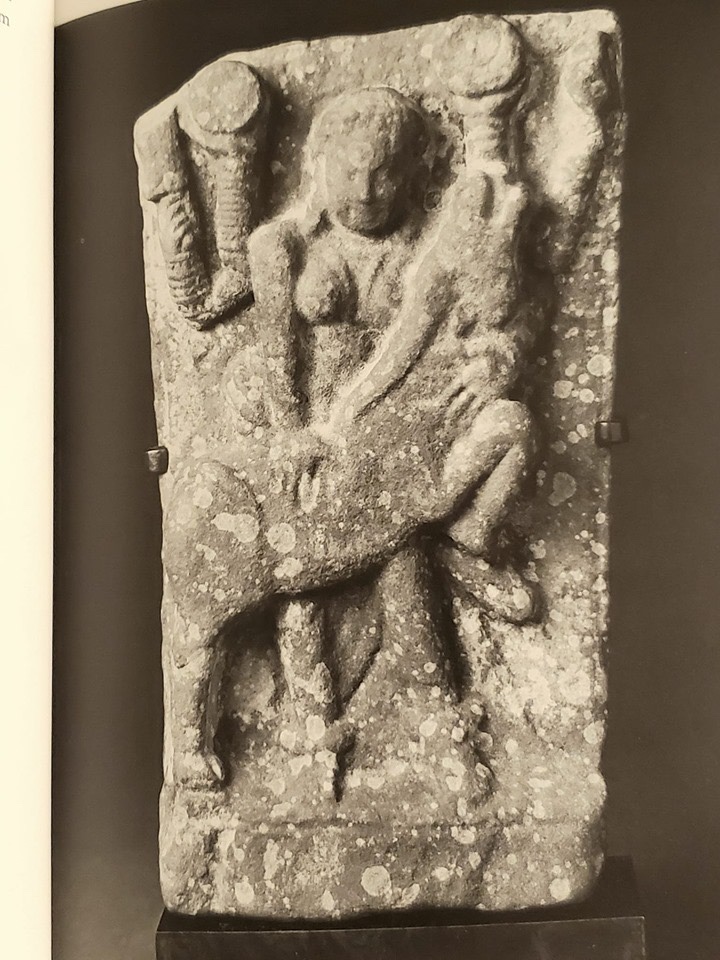

the sculpture at Gurajala in Guntur district [Credit: Deccan Chronicle]
Dr. Reddy said that the iconographical style of the sculpture suggests that it belongs to post Ikshvaku period. The simple ornamentation and the typical animal form of Mahishasura is identical to the style of Vishnukundinas. The idol is seen with a saree and all ornaments and killing the demon, Mahishasura, piercing him with the trident.
She holds a sword in her right hand and the tail of the demon, in the shape of a buffalo, in her left hand. She holds a trident and a mace in her additional two hands. A small head gear, necklace, ear ornaments, bangles and armlets suggests the typical style of Vishnukundinas, said Dr Reddy. This also suggests that the Saktite religion survived in Palnadu region along with Shaivism and Vaishnavism.
source
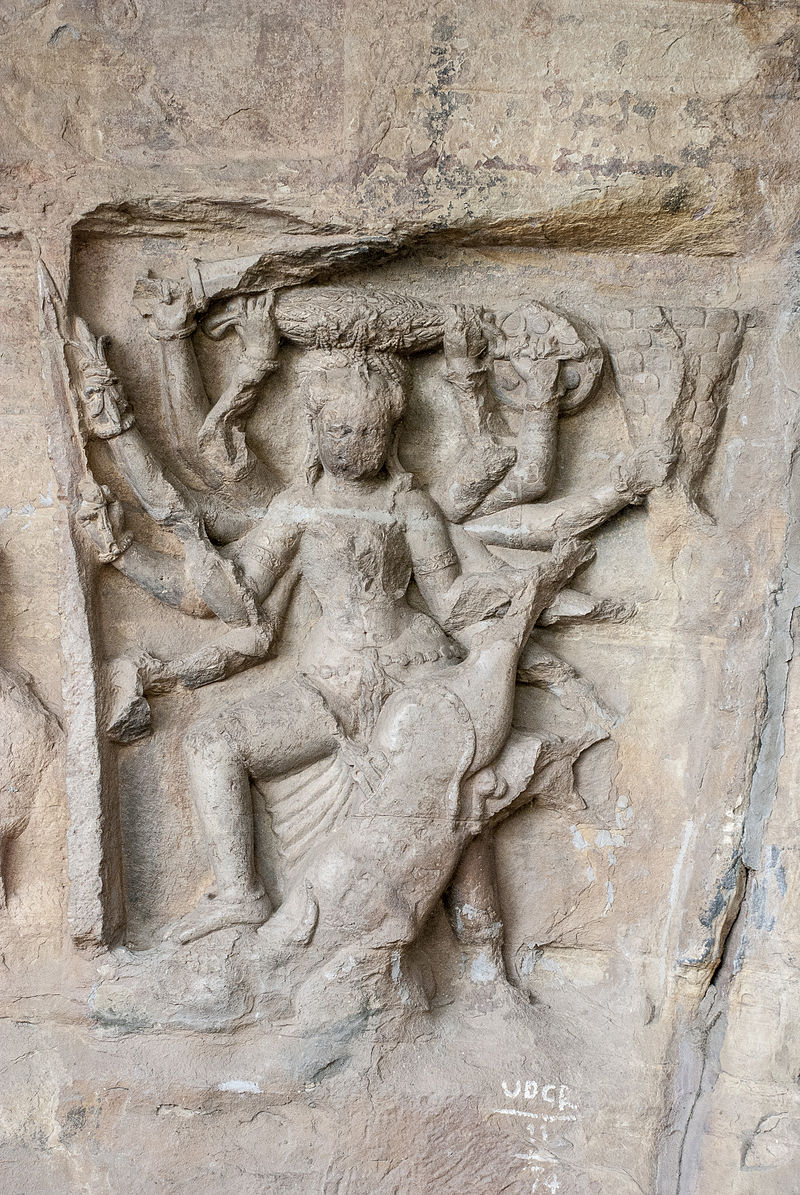

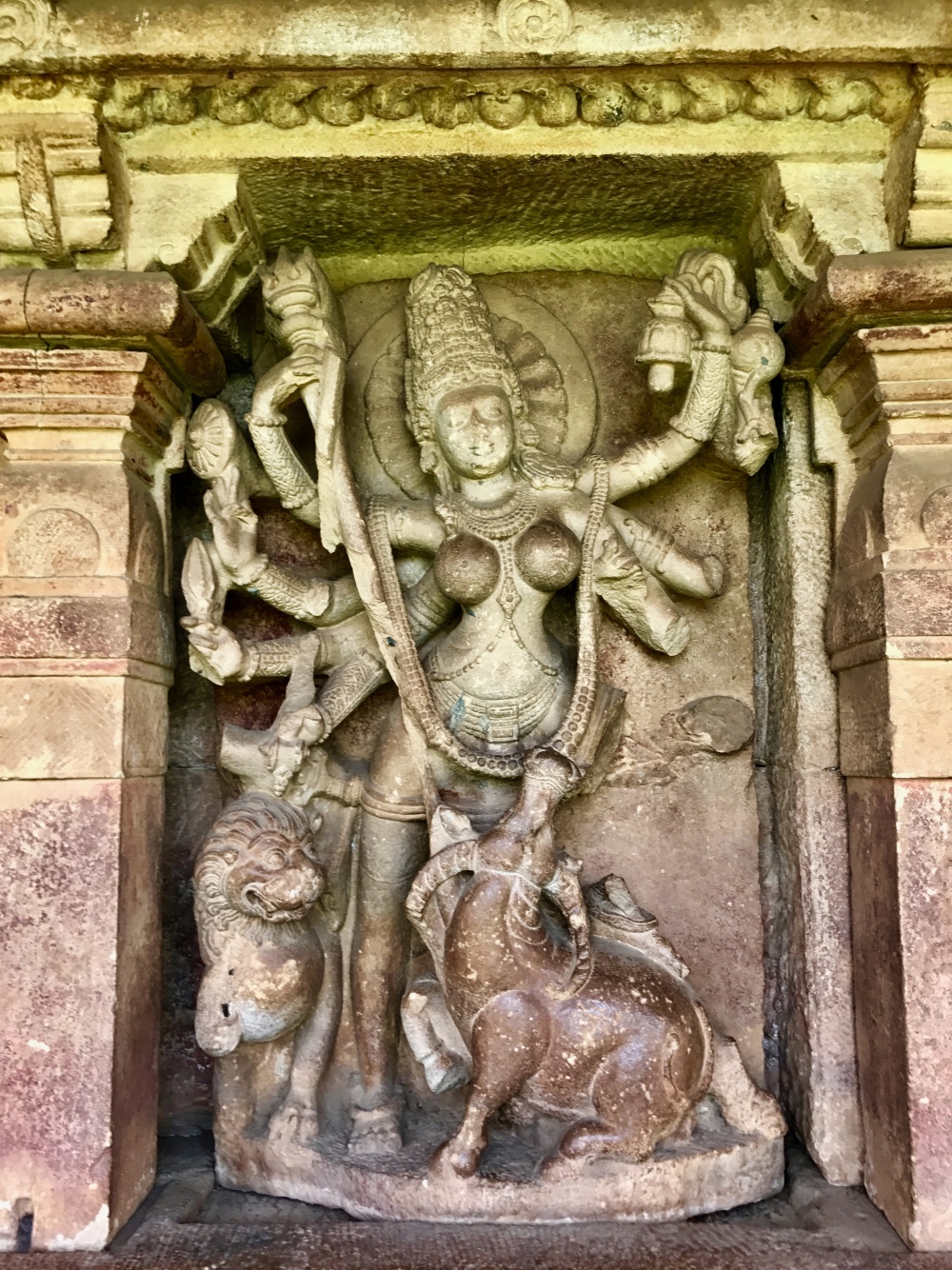


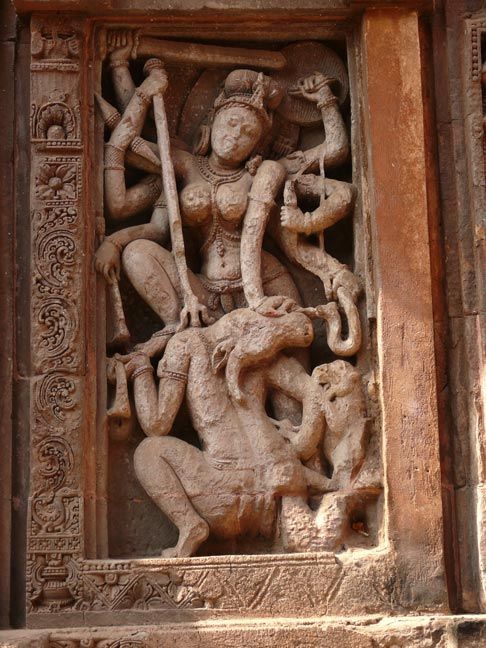
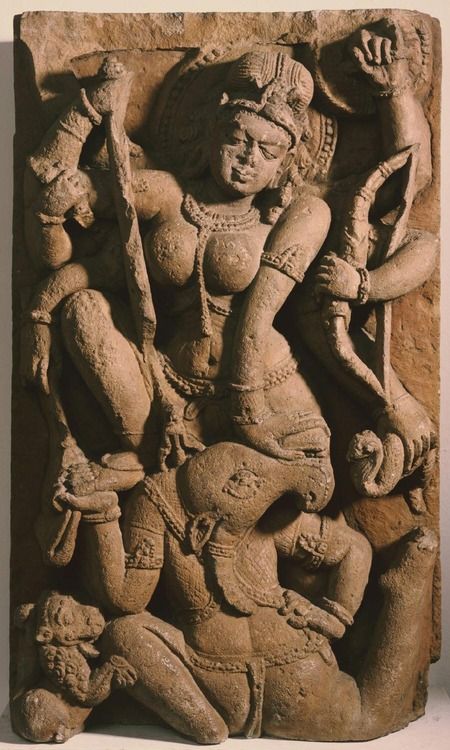

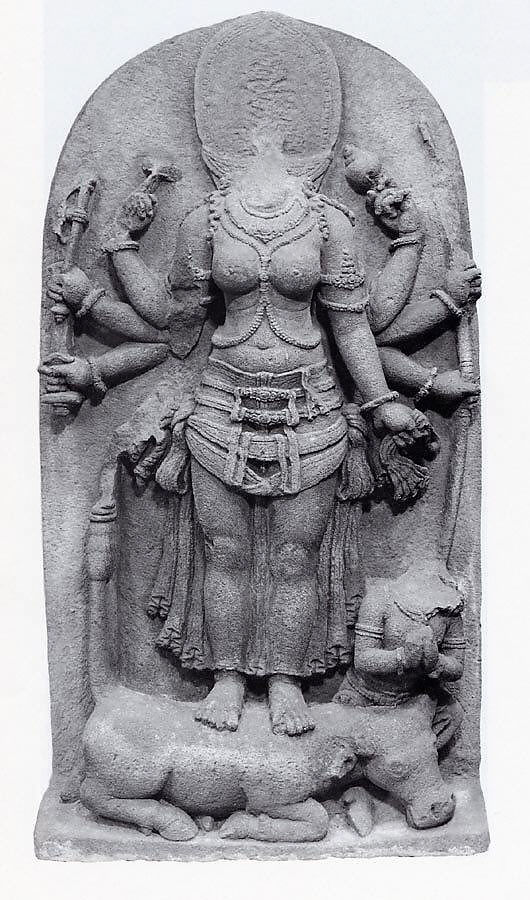
Indonesia (Java)


Indonesia, Central Java, 9th-10th century Sculpture
Volcanic stone
Source




Napier Museum
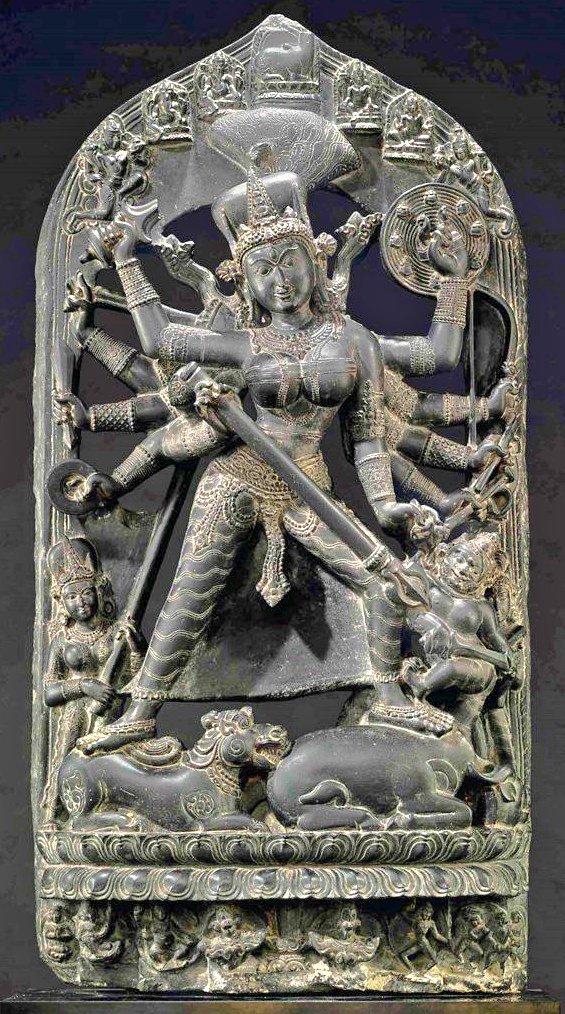

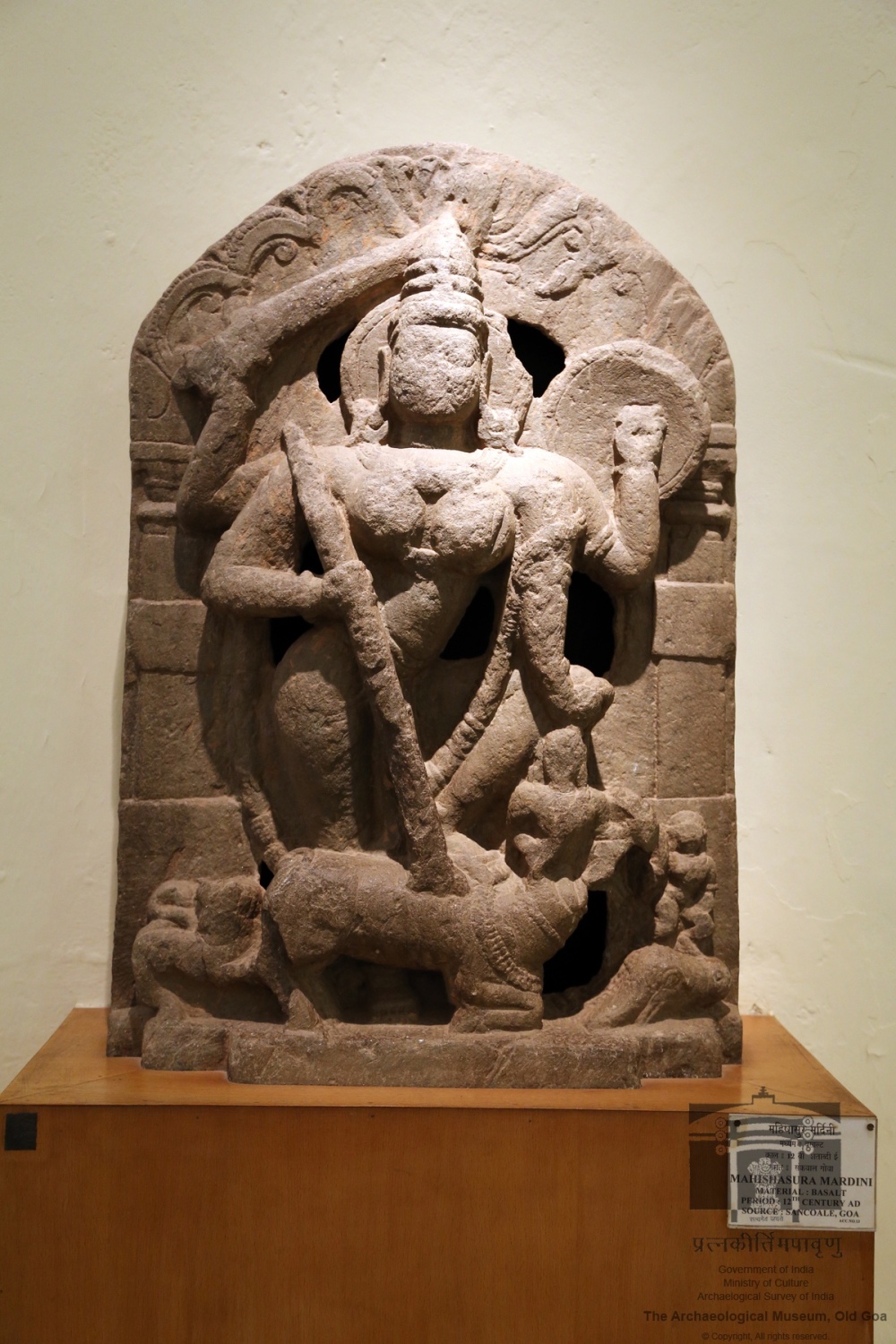

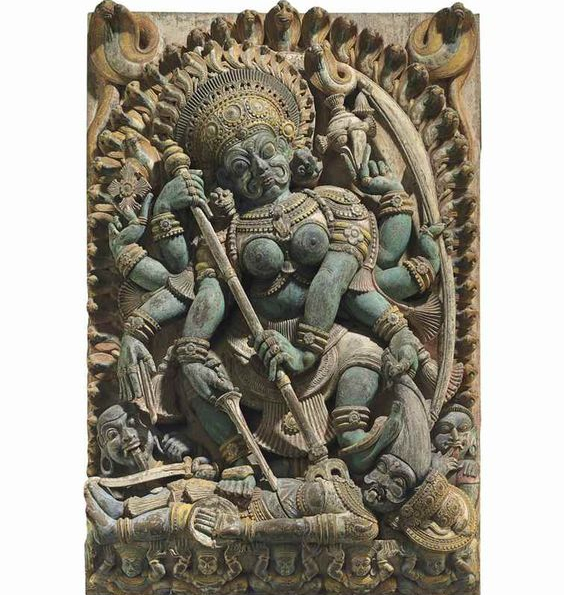

Some paintings of the Devi





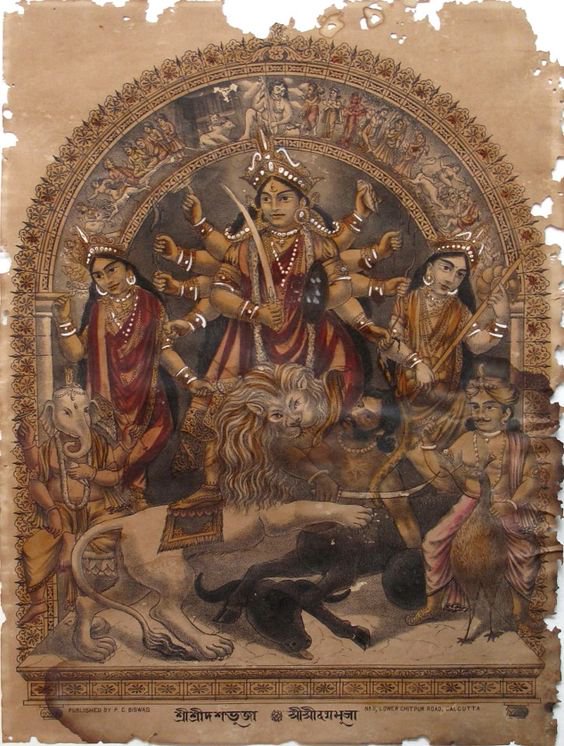

Birbhum, 19th Century A.D.
A collection of the Gurusaday Museum, Joka, Kolkata. Source
References
Agarwala, R., C. The Goddess Mahiṣāsuramardinī in Early Indian Art. Artibus Asiae Vol. 21, No. 2 (1958), pp. 123-130.
Banerjea, J. 1941. Development of Hindu Iconography.
Majumdar, R.C. (ed.); K.K. Dasgupta (Joint Ed.). A Comprehensive History of India: Volume III: Part I.
(photos taken from the internet and used here are purely for representative purposes, and have no commercial use)

Congratulations.
Stupendous task.
Very very informative.
LikeLiked by 1 person
Thank you 😊
LikeLike
I wonder why not enough comments here. This is a work of pure love.
Thank you!
LikeLiked by 1 person
Thank you for reading it 😊😊
LikeLike